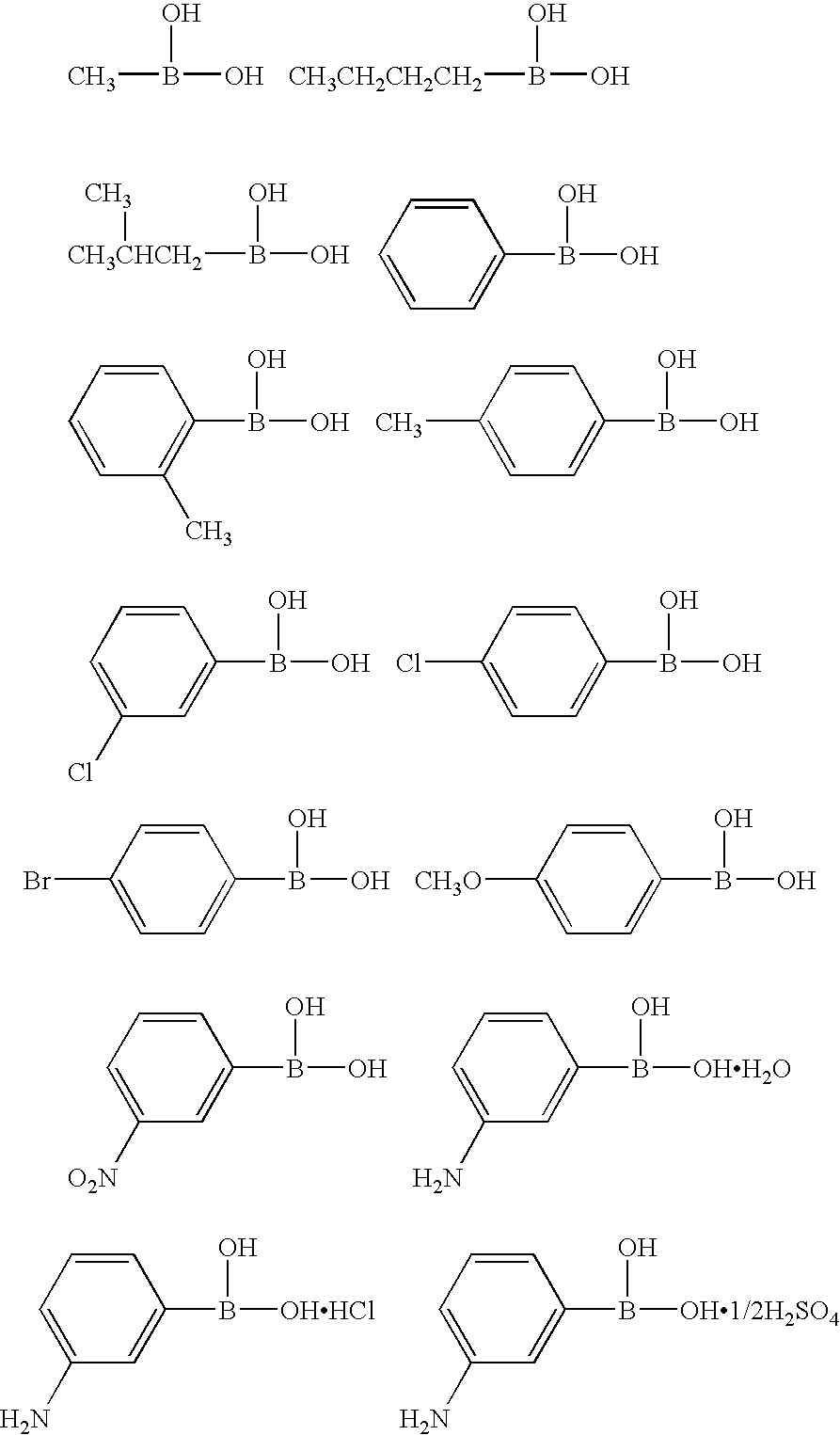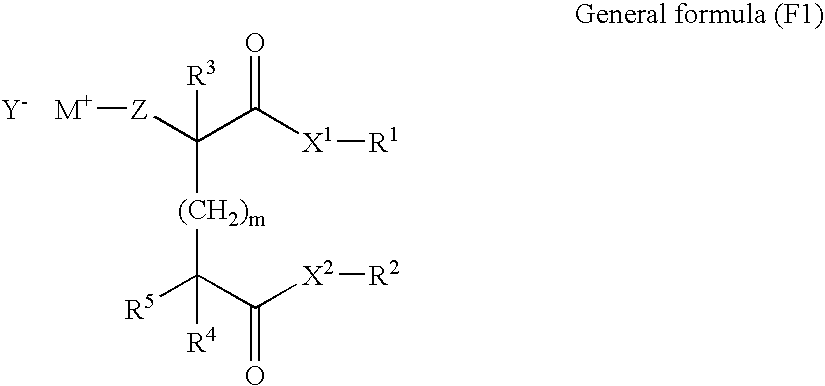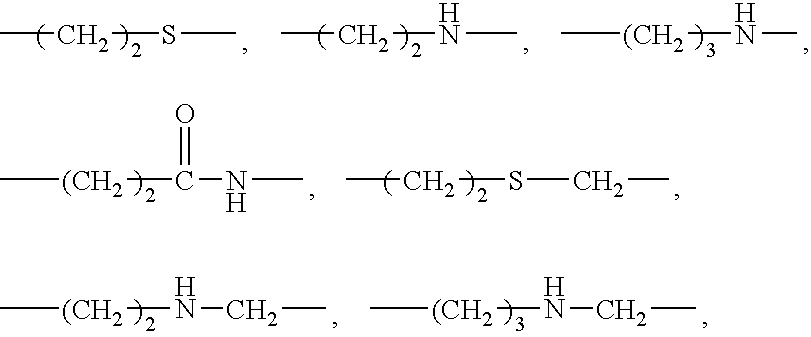Photothermographic material
- Summary
- Abstract
- Description
- Claims
- Application Information
AI Technical Summary
Benefits of technology
Problems solved by technology
Method used
Image
Examples
example 1
1. Preparation of Coating Solutions
1) Preparation of Coating Solution for Image Forming Layer-1
[0794]The dispersion A of the silver salt of fatty acid obtained as described above in an amount of 1000 g, 135 mL of water, 35 g of the pigment-1 dispersion, 19 g of the organic polyhalogen compound-1 dispersion, 58 g of the organic polyhalogen compound-2 dispersion, 162 g of the phthalazine compound-1 solution, 1060 g of the SBR latex (Tg: 17° C.) solution, 75 g of the reducing agent-1 dispersion, 75 g of the reducing agent-2 dispersion, 106 g of the hydrogen bonding compound-1 dispersion, 4.8 g of the development accelerator-1 dispersion, 9 mL of the mercapto compound-1 aqueous solution, and 27 mL of the mercapto compound-2 aqueous solution were serially added. The coating solution for the image forming layer prepared by adding 118 g of the silver halide mixed emulsion A thereto followed by thorough mixing just prior to the coating was fed directly to a coating die, and was coated.
[0795...
example 2
1. Preparation of Coating Solutions
1) Preparation of Coating Solution for Image Forming Layer
[0853]The dispersion A of the silver salt of fatty acid obtained as described above in an amount of 1000 g, 135 mL of water, 35 g of the pigment-1 dispersion, 19 g of the organic polyhalogen compound-1 dispersion, 58 g of the organic polyhalogen compound-2 dispersion, 162 g of the phthalazine compound-1 solution, 1060 g of the SBR latex (Tg: 17° C.) solution, 75 g of the reducing agent-1 dispersion, 75 g of the reducing agent-2 dispersion, 106 g of the hydrogen bonding compound-1 dispersion, 4.8 g of the development accelerator-1 dispersion, 9 mL of the mercapto compound-1 aqueous solution and 27 mL of the mercapto compound-2 aqueous solution were serially added. The coating solution for the image forming layer prepared by adding 118 g of the silver halide mixed emulsion A thereto followed by thorough mixing just prior to the coating was fed directly to a coating die.
2) Preparation of Coatin...
example 3
[0893](Preparations of Coating Solution of Layer Adjacent to Outermost Layer-4 and -5)
[0894]Preparation of coating solution for layer adjacent to outermost layer-4 was conducted in the similar manner to that of coating solution for layer adjacent to outermost layer-3 in Example 2 except that adding sodium alginate instead of κ-carrageenan. And preparation of coating solution for layer adjacent to outermost layer-5 was conducted in the similar manner to that of coating solution for layer adjacent to outermost layer-3 in Example 2 except that adding locust bean gum instead of κ-carrageenan.
[0895](Preparations Preparations of Coating Solution for Intermediate Layer-12 to -14)
[0896]Preparations of coating solution for intermediate layer-12 to -14 was conducted in the similar manner to that of coating solution for intermediate layer-11 instead of adding gelation accelerator as follows:
[0897]Coating solution for intermediate layer-12: adding potassium nitrate as a gelation accelerator so ...
PUM
 Login to View More
Login to View More Abstract
Description
Claims
Application Information
 Login to View More
Login to View More - R&D
- Intellectual Property
- Life Sciences
- Materials
- Tech Scout
- Unparalleled Data Quality
- Higher Quality Content
- 60% Fewer Hallucinations
Browse by: Latest US Patents, China's latest patents, Technical Efficacy Thesaurus, Application Domain, Technology Topic, Popular Technical Reports.
© 2025 PatSnap. All rights reserved.Legal|Privacy policy|Modern Slavery Act Transparency Statement|Sitemap|About US| Contact US: help@patsnap.com



